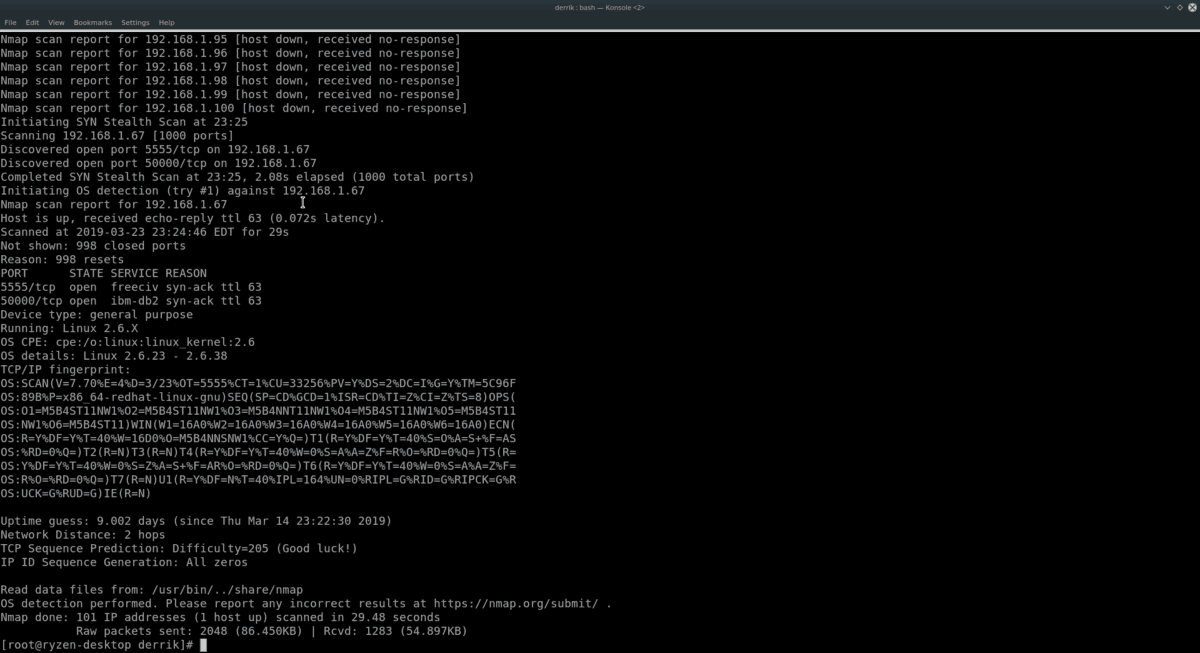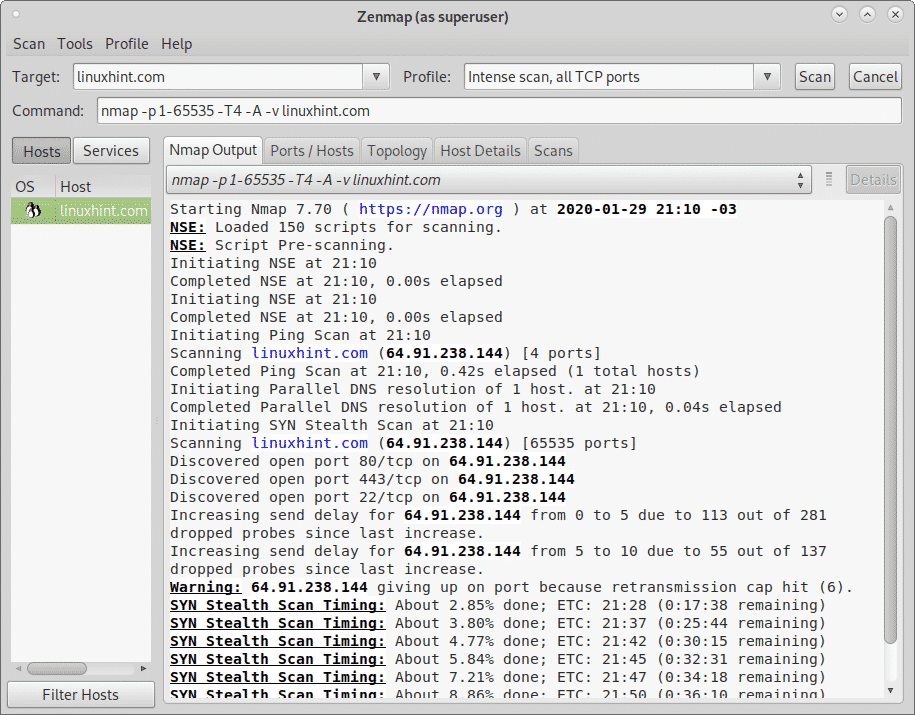
We can also scan all UDP ports by using the -sU option. We will use -sU for UDP protocol specification. We will use the same port range specification used in TCP.

We should explicitly specify the UDP protocol for the UDP port scan. Nmap uses TCP as the default protocol for the port scan. $ nmap -p- 192.168.122.1 Scan All UDP Ports with Range We can use -p- which is more practical then port range specification. 192.168.0.1 to 192.168.0.Faster Scan For All Ports Scan All TCP PortsĪnother way to specify all TCP ports is a dash. In the above example nmap will scan 192.168.0.1/24, i.e.

scan_range = nm.scan(hosts= "192.168.0.1/24" ) nmap scanning multiple hosts using a CIDR range If Classless Inter Domain Routing (CIDR) is more your style and you know the CIDR notation of the network you want to scan then that can be used instead. The above example will scan all the hosts on IP addresses between (and including) 192.168.0.1 and 192.168.0.10 A CIDR Range scan_range = nm.scan(hosts= "192.168.0.1-10" ) nmap scanning multiple hosts, entering a range of hosts 192.168.0.1 to 192.168.0.10) then nmap can be given the range to scan rather than typing in each individual host. If the hosts you want to scan are in a range (i.e.
#Zenmap scan ip range code#
The above Python code can be changed to scan multiple hosts instead of one single host, just with an alteration to the line that begins scan_range and adding a space in between each host. Using Python To Scan Multiple Hosts Multiple Individual Hosts nmap scan results Īs can be seen from the returned JSON, nmap managed to see 192.168.0.28, could tell the device was up, that port 22 (SSH) was open, the type of SSH in use (OpenSSH) and the operating system (Raspbian) in use. The results from the scan will be outputted in JSON format. Note: nmap can take a few minutes to scan an individual host depending on the options given to it. #!/usr/bin/python3 # geektechstuff nmap import nmap nm = nmap.PortScanner() scan_range = nm.scan(hosts= "192.168.0.28" ) print (scan_range) Using nmap in Python to scan a host Using Python To Scan A Single Hostįor my first Python script I am going to scan a Raspberry Pi that is on IP address 192.168.0.28. pip3 uninstall nmap to uninstall the library.
#Zenmap scan ip range install#
If you install the wrong library via pip3, then use pip3 uninstall library_name, e.g. python-nmap used to access nmap and scans from Python3 –.nmap maps numbers from one range to another –.If you want to see what the difference between the packages is: Installing Python Nmap pip3 install python-nmap pip3 install python-nmapīe careful at this stage Python has a package called nmap which is not the package we are looking for. If you want to use nmap on its own, then open a terminal / command line and type nmap. Nmap is a program that can be used without having to write any Python and at some point in the future I may do a blog post on it. If you don’t have these installed then: Installing nmap sudo apt-get install nmap sudo apt-get install nmap

This project requires nmap and the Python nmap library. The same details should work on the majority of Linux systems with Python, although you may need to replace apt with yum etc… in commands. I TAKE NO RESPONSIBILITY FOR YOUR ACTIONS.įor this project I am using my home test network and running Python 3 on a Raspberry Pi (Raspbian Linux). I previously created a basic port scanner in Python, but in this blog post I am going to look at using Python with nmap to see some of what it can do.īefore proceeding I need to make this very clear:ĭO NOT USE THE BELOW INFORMATION TO ATTACK, MONITOR OR BREAK INTO ANY COMPUTER / NETWORK / DEVICE THAT DOES NOT BELONG TO YOU.

#Zenmap scan ip range software#
Nmap is a powerful software tool that can be used to scan a network for hosts, see what ports they have open and even try to identify what operating system the hosts have running.


 0 kommentar(er)
0 kommentar(er)
